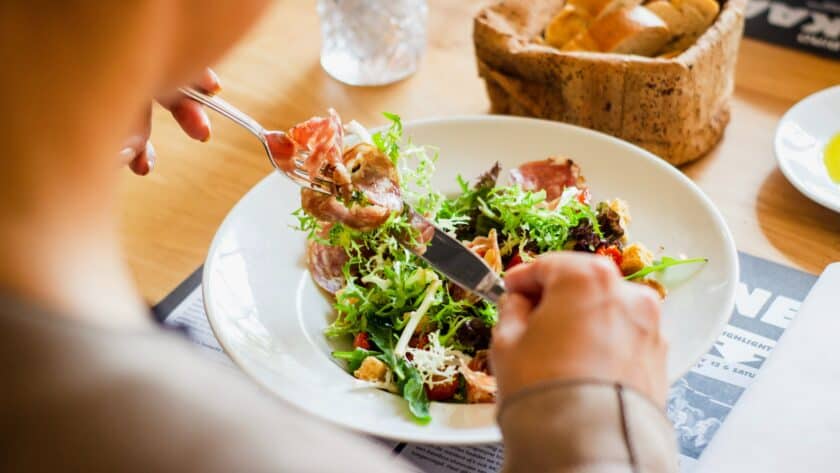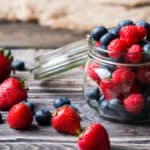If you have diverticulitis, it’s normal to feel concerned about which diet to follow. While no diet can cure diverticulitis, certain diets can help manage symptoms and reduce the risk of flare-ups. In this article, we’ll cover 7 diets for diverticulitis, what to eat and what to avoid, and how to choose the best diet for you.
Understanding Diverticulitis
Before we delve into the diets, let’s first understand what diverticulitis is.
What is Diverticulitis?
Diverticulitis is a digestive condition that arises when small pouches in the digestive tract lining, known as diverticula, become inflamed or infected. This condition can cause symptoms like abdominal pain, bloating, constipation, and diarrhea, and can even lead to more severe complications like bleeding or perforation of the diverticula.
Diverticulitis is a common condition, especially in older adults. According to the National Institute of Diabetes and Digestive and Kidney Diseases, about half of all Americans over the age of 60 have diverticulosis, which is the presence of diverticula in the colon. While not everyone with diverticulosis will develop diverticulitis, it is important to be aware of the risk factors and take steps to manage the condition.
Causes and Symptoms of Diverticulitis
The exact cause of diverticulitis is not well understood, but it is linked to a diet that is low in fiber. When there is not enough fiber in the diet, the stool becomes hard and compact, increasing the pressure on the colon and leading to the formation of diverticula. Additionally, when these pouches become trapped with stool and bacteria, they can become inflamed or infected, causing diverticulitis symptoms.
Other risk factors for diverticulitis include obesity, smoking, lack of exercise, and certain medications. Symptoms of diverticulitis can vary from person to person, but may include:
- Abdominal pain, usually on the lower left side
- Bloating and gas
- Constipation or diarrhea
- Fever and chills
- Nausea and vomiting
If you experience any of these symptoms, it is important to see a doctor for an accurate diagnosis and treatment plan.
The Importance of Diets for Diverticulitis
Since the risk of diverticulitis is linked to low-fiber diets, making dietary changes is one of the most effective ways to manage this condition. While there is no one-size-fits-all solution, certain diets have shown promise in reducing symptoms and enhancing gut health.
The most commonly recommended diet for diverticulitis is a high-fiber diet, which can help soften the stool and prevent constipation. Foods that are high in fiber include fruits, vegetables, whole grains, and legumes. It is important to increase fiber intake gradually, to avoid causing gas and bloating.
In addition to fiber, probiotics may also be helpful in managing diverticulitis. Probiotics are live bacteria that can help promote a healthy gut microbiome, which may reduce inflammation and improve overall digestive health. Foods that are high in probiotics include yogurt, kefir, sauerkraut, and kimchi.
It is also important to stay hydrated and avoid foods that can irritate the digestive tract, such as spicy foods, caffeine, and alcohol. Your doctor or a registered dietitian can help you create a personalized diet plan that meets your individual needs and preferences.
High-Fiber Diets for Diverticulitis
Diverticulitis is a condition that affects the digestive system and can cause pain, discomfort, and even lead to more serious complications if left untreated. One of the most commonly recommended diets for managing diverticulitis is a high-fiber diet.
High-fiber foods like fruits, vegetables, legumes, and whole grains can help soften the stool, reduce constipation, and prevent the formation of diverticula. This occurs because fiber is indigestible and instead passes through the digestive system, adding bulk to the stool and facilitating smoother movement along the intestines.
Benefits of a High-Fiber Diet
High-fiber diets can be hugely beneficial for people with diverticulitis. In addition to reducing symptoms, they can also improve overall gut health, reduce the risk of other digestive conditions, and even lower the risk of heart disease and cancer. This is because fiber helps to keep the digestive system healthy and functioning properly, which can have a positive impact on overall health and wellness.
Research has also shown that a high-fiber diet can help to reduce inflammation in the body, which is important for people with diverticulitis as inflammation can worsen symptoms and lead to complications.
Foods to Include
If you’re looking to follow a high-fiber diet for diverticulitis, focus on including plenty of whole foods like:
- Fruits like berries, apples, and bananas are great sources of fiber and can be easily incorporated into your diet. Berries are particularly high in fiber and can be added to smoothies, yogurt, or eaten as a snack.
- Incorporate fiber-rich vegetables like leafy greens, broccoli, and sweet potatoes into your diet by exploring various appetizing cooking methods. Add spinach or kale to salads or smoothies, and enjoy roasted or mashed sweet potatoes for a delightful twist.
- Legumes like lentils, chickpeas, and black beans are not only high in fiber but also a good source of protein, making them a great addition to any meal. They can be used in soups, stews, salads, or as a side dish.
- Include whole grains such as brown rice, quinoa, and whole-wheat bread as a fiber-rich meal foundation. Utilize brown rice in stir-fries or as a side dish, while quinoa can be a salad ingredient or rice replacement.
Foods to Avoid
While high-fiber foods are generally helpful for diverticulitis, there are some foods to avoid if you’re following this diet. These include:
- Nuts and seeds, including popcorn, sunflower seeds, and sesame seeds, can be difficult to digest and may irritate the digestive system. If you do choose to eat nuts and seeds, make sure they are well-chewed and in small amounts.
- Foods with tough skins, like corn and peas, can also be difficult to digest and may lead to discomfort. For those who choose to consume these foods, it is important to ensure they are thoroughly cooked and consumed in moderation.
- Avoid high-fat or sugary foods like fried foods and candy to prevent symptom aggravation and health issues.
Overall, a high-fiber diet can be an effective way to manage diverticulitis and improve overall gut health. Improve your quality of life by including whole foods and avoiding certain foods in your diet.
Low-Residue Diets for Diverticulitis
If you’re experiencing severe symptoms of diverticulitis, your doctor may recommend a low-residue diet. Low-residue diets are low-fiber diets that restrict foods that can be difficult to digest and pass through the colon.
Diverticulitis is a condition in which small, bulging pouches in the digestive system become inflamed or infected. The condition can cause abdominal pain, bloating, and changes in bowel habits. A low-residue diet can help reduce these symptoms and allow your colon to rest and heal.
Benefits of a Low-Residue Diet
A low-residue diet eases diverticulitis symptoms and supports colon healing. However, it’s advised for short-term use as prolonged fiber restriction can impact gut health.
A low-residue diet helps manage diverticulitis and can also benefit those with inflammatory bowel disease or irritable bowel syndrome. It reduces inflammation and irritation in the digestive tract.
Foods to Include
If you’re following a low-residue diet for diverticulitis, stick to easily digestible foods like:
- White bread and pasta
- Cooked vegetables like carrots, zucchini, and beets
- Lean proteins like chicken, turkey, and fish
- Well-cooked fruits like bananas and applesauce
These foods are low in fiber, which means they are easier for your body to digest and pass through the colon. They can also help reduce inflammation and irritation in the digestive tract.
Foods to Avoid
Since this diet is low in fiber, there are several foods to avoid if you’re following a low-residue diet for diverticulitis. These include:
- Raw fruits and vegetables
- Whole grains and seeds
- Dried fruits, like raisins and prunes
These foods are high in fiber, which means they can be difficult for your body to digest and pass through the colon. They can also irritate the digestive tract and worsen symptoms of diverticulitis.
It’s important to note that a low-residue diet should only be followed under the guidance of a healthcare professional. If you’re experiencing symptoms of diverticulitis, talk to your doctor about the best treatment plan for you.
Gluten-Free Diets for Diverticulitis
If you have celiac disease or a gluten sensitivity along with diverticulitis, a gluten-free diet can be helpful. This diet removes gluten-containing foods such as wheat, barley, and rye, which can trigger gut inflammation in those with gluten sensitivities.
Benefits of a Gluten-Free Diets for Diverticulitis
A gluten-free diet reduces gut inflammation and improves symptoms of diverticulitis, gluten sensitivity, and celiac disease.
Foods for Diverticuliti Diets
If you’re following a gluten-free diet for diverticulitis, stick to gluten-free alternatives of foods like:
- Corn and rice-based products
- Gluten-free grains like quinoa, millet, and buckwheat
- Fruits and vegetables
- Lean proteins like chicken, fish, tofu, and eggs
Foods to Avoid
Avoid foods that contain gluten, like:
- Wheat-based products like bread, pasta, and crackers
- Barley- or rye-based products like beer and cereal
- Soy sauce, which is often made with wheat
Conclusion | Diets for Diverticulitis
Dietary changes can help manage diverticulitis symptoms and reduce flare-up risk. Incorporating high-fiber, low-residue, or gluten-free foods can reduce inflammation and improve gut health for a better quality of life.
“The information provided on this website is intended for general informational purposes only and should not be considered as medical advice. It is important to always consult with a qualified healthcare professional regarding any medical conditions, symptoms, or concerns you may have. This website does not provide medical diagnosis, treatment, or advice, and reliance on any information provided on this site is solely at your own risk.”



